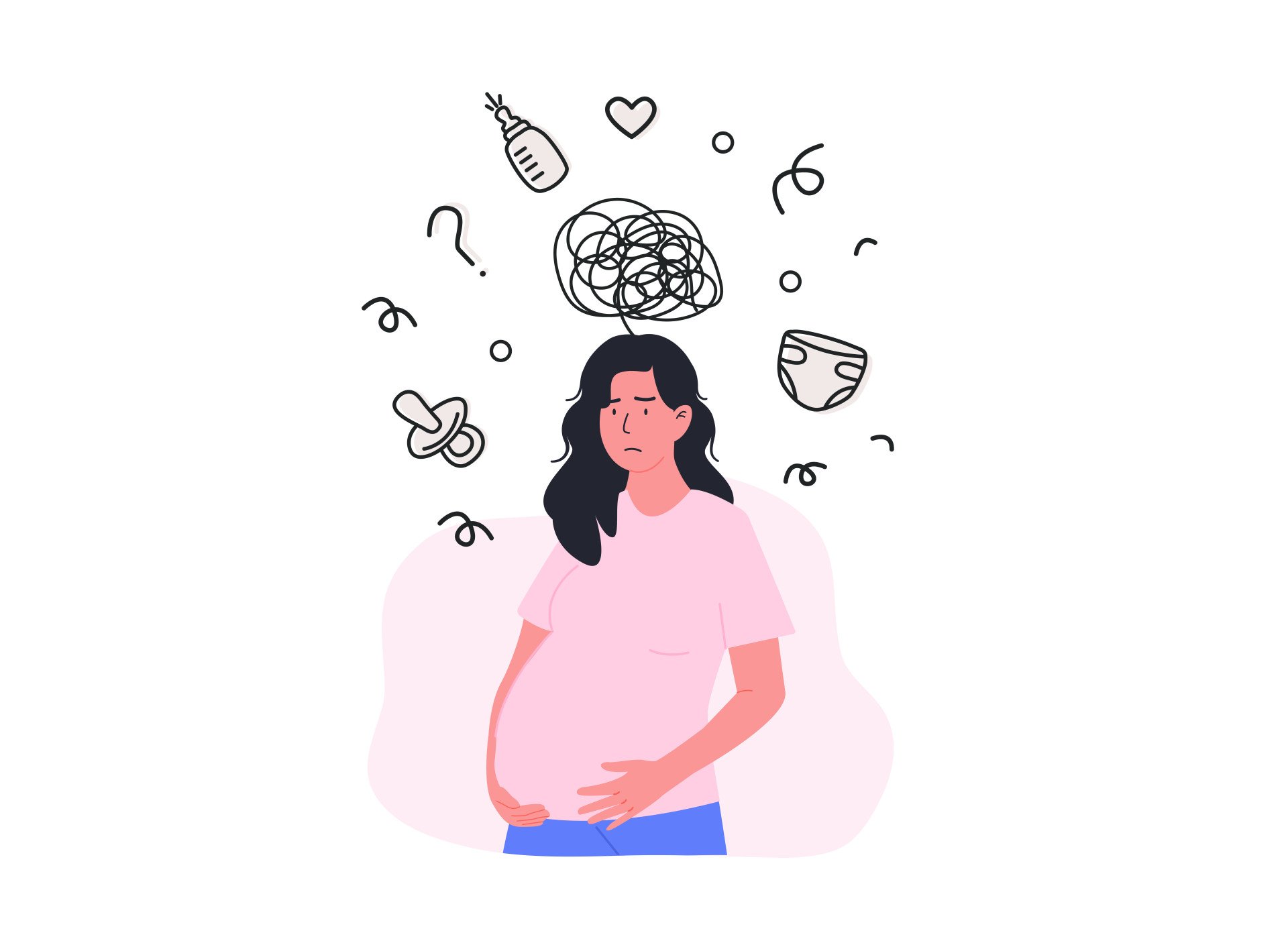Picture a new parent awake at 3 a.m.—not because the baby is crying, but because they can’t stop checking if the baby is breathing. Their mind loops: What if I miss something? What if something goes wrong?
To outsiders, it looks like vigilance. Inside, it feels like drowning in fear.
For decades, clinicians have looked for depression in new parents but missed a quiet epidemic: anxiety.
The latest research shows it’s not only common – it’s one of the most prevalent and impairing mental health conditions during pregnancy and the postpartum period.
And the clinical world is only now catching up.

Key Points
- Anxiety disorders affect around one in five pregnant or postpartum people, making them more common than depression.
- Fear of childbirth and pregnancy-specific anxiety often go unnoticed because they fall outside standard diagnostic categories.
- Current screening tools miss many cases, highlighting the need for perinatal-specific assessments.
- Cognitive-behavioral therapies (CBT) adapted for pregnancy and early parenthood show strong potential—especially when made flexible, brief, and remote.
- Recognizing perinatal anxiety early can improve outcomes for both parent and infant, shaping emotional health for years to come.
A Hidden Prevalence Problem
A major review by Fairbrother and colleagues (2025) synthesized global data showing that 21% of perinatal parents meet criteria for an anxiety disorder – compared to roughly 17% for depression.
Disorders like generalized anxiety, panic, and obsessive–compulsive disorder (OCD) can begin or worsen during pregnancy, yet routine screening often overlooks them.
Part of the problem lies in language.
Many parents experience fears that don’t fit the textbook. They might obsess over germs, repeatedly check the baby, or fear childbirth so intensely they avoid medical appointments.
But because standard screening questions don’t mention these experiences, people often answer “no” to having anxiety – while quietly living with disabling worry.
This mismatch has real costs.
Without targeted screening, clinicians underestimate prevalence and miss opportunities for early intervention.
As the authors note, even when parents are asked about mood, “they may not recognize their experience in the questions being asked.”
Why Screening Tools Fall Short
The review found that popular tools like the GAD-7 and EPDS—though widely used—perform poorly in detecting perinatal anxiety. They capture some general worry and low mood but miss the uniquely embodied fears of pregnancy and new parenthood.
By contrast, newer measures such as the Stirling Antenatal Anxiety Scale (SAAS) and CORE-10 show stronger accuracy because they blend items across multiple anxiety types.
Still, these tools require replication and adaptation before they can be widely adopted.
The takeaway?
Universal screening is vital—but only if we use the right instruments.
Asking the right questions could mean the difference between a parent quietly suffering and one getting timely, effective support.
A Perfect Storm of Vulnerability
Why is anxiety so common during this period?
The review highlights a complex interplay of biological, psychological, and social forces.
Fluctuating hormones can amplify fear responses, while societal pressures—like the expectation to be endlessly calm and capable—intensify self-blame.
Many mothers and birthing people also face structural stressors: economic insecurity, discrimination, and unequal caregiving demands.
These factors converge on the same neural circuitry that governs threat detection. The brain’s alarm system—tuned to keep the baby safe—can become hypersensitive, mistaking everyday uncertainties for danger.
When this happens, anxiety stops being protective and starts being paralyzing.
Therapy That Meets Parents Where They Are
Encouragingly, the review finds growing evidence that adapted cognitive-behavioral therapy (CBT) can help.
Across studies, brief, perinatally tailored CBT delivered in groups, online, or integrated with routine care significantly reduced anxiety symptoms.
Interventions worked best when they:
- Focused on real-life parenting worries rather than abstract fears,
- Offered flexibility around feeding schedules and childcare, and
- Used shorter, remote sessions to reduce treatment burden.
For many, even six sessions of focused CBT led to lasting improvements months later.
In one trial, a structured support program called PRISM outperformed standard postnatal care in reducing anxiety at 4–12 weeks postpartum.
However, access remains uneven.
Parents with lower incomes, less flexible jobs, or limited childcare often can’t attend multiple appointments—making integrated care models essential.
Coordinating therapy with obstetric visits or offering guided online programs could close this gap.
Clinicians: Reframing “Normal” Anxiety
For clinicians, the challenge is twofold: recognizing when anxiety is adaptive and when it’s impairing. Some vigilance protects both parent and infant; too much can erode functioning, bonding, and sleep.
Therapists are urged to validate the function of worry—its roots in responsibility—before gently helping clients test its limits.
Exposure-based CBT remains the gold standard, but therapists may need to adapt exercises that account for medical restrictions, physical recovery, and infant care demands.
Equally, clinicians should approach intrusive thoughts of harm with nuance.
The review emphasizes that such thoughts are common and not predictive of actual risk—a crucial distinction that prevents unnecessary alarm and supports compassionate care.
Why It Matters
Untreated perinatal anxiety isn’t just distressing—it’s intergenerational.
Research links it to higher rates of preterm birth, difficult infant temperament, and later child anxiety. But the story doesn’t end there.
When parents receive effective treatment, improvements in their mental health often ripple outward—to relationships, parenting confidence, and child development.
In short: addressing anxiety early can alter the emotional blueprint of an entire family.
Reference
Fairbrother, N., Challacombe, F. L., Green, S. M., & O’Mahen, H. A. (2025). Anxiety and Related Disorders During the Perinatal Period. Annual Review of Clinical Psychology, 21.


